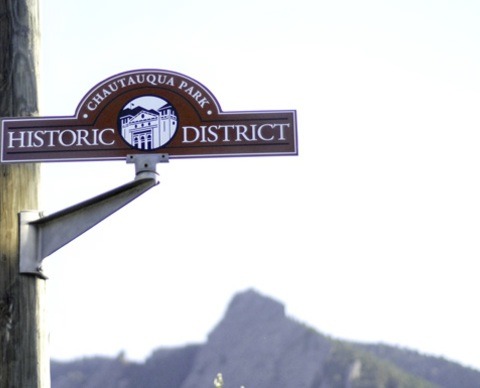#chautauqua
Text

Jewish Chautauqua Society '78
9 notes
·
View notes
Text

My college girlfriend walked out of Chautauqua’s little church-shaped movie theater with tears in her eyes. We’d seen Frank Capra’s It Happened One Night (1934). I had enjoyed the movie but wasn’t necessarily as moved as she was. She suddenly needed to tell me something. She came to visit me in Chautauqua on a Saturday. It was now Wednesday night. Wednesday was the Classic Cinema Night at the theater when they screened an old movie at 5 PM for people who couldn’t watch a movie after 7 PM without falling asleep. I was one of those people.
The sun was still bright when we walked out of the theater. We headed down a grass hill and stood on the brick walk in front of the arches of the opera house.
“Did the movie bother you?” I asked.
She was pinching her flushed face, tears rolling down her cheeks while she squeezed my hand. She would not look at me.
“I did something.” she said.
I knew. I even knew who it was with. Not hard to guess. In a way, I was glad it was her ex-boyfriend and not some random guy she’d gotten drunk with. That I would have taken personally. This instance was mostly about them and not me. Except we’d been together for at least a year, so I felt somewhat involved.
She fucked her ex and told me about it. She wanted me to know she wasn’t rekindling anything and saw the act more as the death knell of their love for each other. She hated that it happened, though I didn’t feel like she hated herself enough for doing it. He hated that she didn’t want him back, I know that much. I know a lot I wish I didn’t. More details than I needed. He was outdoorsy and she had loved him half her life and he could do a one-handed push-up. I was some nerd she’d met at school who liked reading Updike novels, most of which were ironically about this very subject.
After our conversation, I walked the 3-mile loop of the Chautauqua Institution in the dark. I wasn’t ready to cry yet, and instead entered the manic phase of a young man in pain, making small talk with strangers in a voice I now know must have sounded too fast and high-pitched. Many of these people took the opportunity to turn down the first available side street and wave me off.
For better or worse, this was not the straw that broke the camel’s back for me and my girlfriend. That would come much later. Chautauqua, however, was ruined for an evening, perhaps a year. Why wasn’t I in New York City getting a leg up on my comedy career? Why was I wasting a summer in this pretty place made for young families and the nearly deceased? I should be using this current heartbreak to fuel my rampage of the city’s eligible dating pool. I made a plan to not come back the next year as I walked.
The flowers looked black against the moonlit surface of the lake. The cackling silhouettes of carefree teens getting drunk by the bell tower seemed like wraiths. I went home where she was waiting for me on the porch. I got some more details I didn’t want, and then we made up and dated for two more years.
Read the rest here.
9 notes
·
View notes
Text

Women Professional Workers: A Study Made for the Women's Educational and Industrial Union (1921) by Elizabeth Kemper Adams for the Chautauqua Home Reading Service
"A Guide-book to Professional Opportunities"
This book has been highly recommended especially by the National Federation of Business and Professional Women's Clubs and the Women's Education and Industrial Union of Massachusetts and is needed by every woman going into business or who has gone into business or wants to get somewhere in business or the professions. It covers a wide field of occupations, giving the special qualities required for each particular work, success and limitations even to amounts of salary received.
The author is Elizabeth Kemper Adams, formerly Professor of Education at Smith College, and at the present time Educational Director of the Girls Scout movement. Experience proves that the man or woman who has a well trained mind has a tremendous advantage and any woman who will spend twenty minutes a day reading books such as this will enrich her mind, broaden her vision and receive big dividends in character development. This book points the way to success in business and society.
The Browne Popular Culture Library (BPCL), founded in 1969, is the most comprehensive archive of its kind in the United States. Our focus and mission is to acquire and preserve research materials on American Popular Culture (post 1876) for curricular and research use. Visit our website at https://www.bgsu.edu/library/pcl.html.
3 notes
·
View notes
Text

Dunkirk harbor :: [Shoot 'n Share Chautauqua]
* * * * *
We gaze with perplexity at the highest part of the spiral of force that governs the Universe. And we call it God.
We could give it any other name: Abyss, Mystery, Absolute Darkness, Total Light, Matter, Spirit, Supreme Hope, Supreme Despair, Silence. But we call it God, because only this name – for some mysterious reason – is capable of making our heart tremble with vigor.
~ Nikos Kazantzakis
[alive on all channels]
#Dunkirk Harbor#Chautauqua#harbor#Nikos Kazantzakis#god#spiral of force#quotes#alive on all channels
13 notes
·
View notes
Text






The tiny town I grew up in has a Chautauqua event in the park every July. The town itself maybe has 1000 people, but the park is full of cottages from the late 1800s, early 1900s that people stay in during the summer and it is so cute!
4 notes
·
View notes
Text









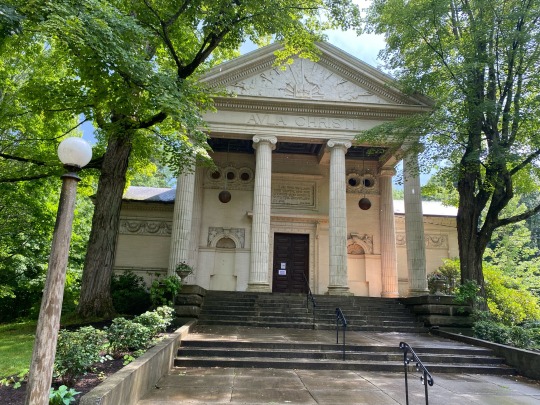
2 notes
·
View notes
Text
"Sister of the Packard men": The unusual story of Alaska Packard Davidson
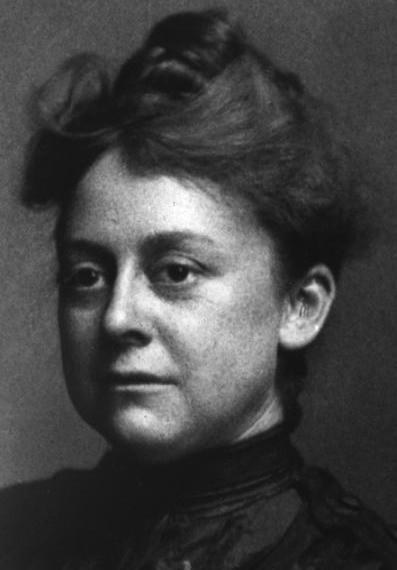
Portrait picture of Alaska, presumably in 1922, via Wikimedia, which posted this public domain image
Recently, in going through some documents made searchable and digitized by the Library of Congress, I came across one Alaska Packard Davidson, who is described on her Wikipedia page as "an American law enforcement officer who is best known for being the first female special agent in the FBI." At age 54, she joined the Bureau of Investigation (BOI) in October 11, 1922 as a special investigator, with a starting salary of $7 a day, which went up to $11 a day when traveling, first working at the New York office (where she went for training), then at the Washington office. [1]
Although the BOI, the FBI's precursor, wanted to hire women for cases related to combating intersex sex trafficking, she was considered "refined" so she wasn't put on such cases, meaning the BOI considered her of "limited use" in prosecuting such crimes, partially due to her limited schooling. [2] Instead, she was involved in a case against an agent who sold classified DOJ information to criminals, for example. [3] After the resignation of her former boss, William J. Burns, who was caught up in the Teapot Dome Scandal, she was forced out by J. Edgar Hoover, who had become the Bureau's acting director in 1924. He asked her to resign after the special agent leading the Washington field office, E.R. Bohner, said he had "no particular work for a woman agent."
She resigned on June 10 of the same year, even though there was no indication her work was unsatisificatory. Before that point, she still was able to transmit information to the BOI on the Fourth International Congress of the Women's International League for Peace and Freedom (WILPF), a women's peace activist group, in May 1924, under the name of A.P. Davidson, informing the agency, including Hoover, about their activities, because they claimed that Jane Addams was committing "treason" (a lie). [4] Following her, and with the resignation of other agents in the 1920s (Jessie B. Duckstein and Lenore Houston), the BOI, then FBI, had no female agents for 43 years, between 1929 and 1972! There is more to her life than her brief stint in the BOI, crossing some ethical boundaries by spying on WILPF by telling the BOI about its activities. Despite this, the agency still celebrates (also see here) her, despite the problematic history, as I just described, and role of Hoover in her ouster from the BOI.
Here's what we do know. Alaska "Al", likely named after the then-territory of the same name, was born in Ohio, on March 1, 1868, to Warren Packard and Mary Elizabeth, with her two brothers, James Ward and William Doud, who both founded the Packard auto company. She was first listed in the 1870 census as a 2-year-old girl, with James and William in the house, as was her 1-year-old sister Carlotta, and the household headed by Warren, a hardware merchant, and his wife, Mary. [5] In 1880, she was living with her parents, siblings (William, James, and Carlotta) in Chautauqua, New York. She had another sister, named Cornelia Olive, as well.
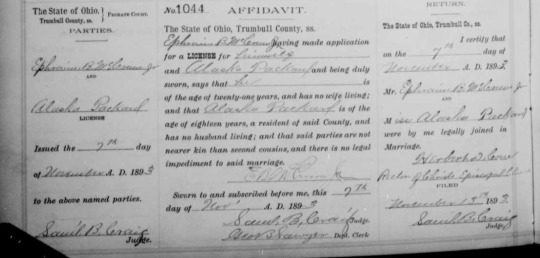
Via "Ohio Marriages, 1800-1958", database, FamilySearch, 25 March 2020, Alaska Packard in entry for Ephraim B. McCrum, 1893, Marriage Record Vol. 10: 1890-1895, Trumbell County, Ohio page 348, image number 214 of 638. This was also confirmed by a 1897 newspaper clipping which called her "Mrs. E. B. McCrum."
Al had been in public school for three years and did not have a college, or university education. Cindee Mines notes on the Trumbell County Historical Society (TCHS) website that she grew up as the daughter of a wealthy territory, living in a huge mansion "on High Street at Mahoning Avenue in the mid 1870’s," and that while there is no evidence she had any higher education, she was a "well-known equestrian, winning awards at county fairs in her teenage years," even put in charge of the "New York and Ohio plant" for Packard Electric in 1890. Beyond that, she married two times. In 1893, she married a man named Ephraim Banks McCrum Jr., a close friend of her father, in Trumbell County, Ohio, as shown above. She had a daughter named Esther in 1894. [6] In 1900, the federal census showed her as married and with one child, while also confirming she had been married for seven years. [7] By then, however, she had, according to the aforementioned TCHS biography, had divorced Ephraim, with Esther living in a Columbus hospital known as the “Institution for Feeble-Minded Youth”. The same census showed her living with her widowed mother, Mary, brothers W.D. and William, and sisters, Carlotta and Cornelia. Esther sadly died in 1902 at the age of 8, of pneumonia, although TCHS said it was tuberculosis. [8]
At some point before 1910, she married a man named James B. Davidson, who was well-known to the Packard family. She is shown in the 1910 census as his wife, living in O'Hara Township, Allegheny, Pennsylvania, with two boarders: a 32-year-old man named Fred Osterley and an 18-year-old woman named Jessie Osterley. [9] A land record the previous year noted Al and James Ward Packard owning a tract of land named Lakewood in Chautauqua, New York. [10] The THCS biography says she purchased over 100 acres in Accotink, Virginia, which is near Mount Vernon, an unincorporated area in Fairfax County, living there with horses and a dog.
By 1920, she was living in Mount Vernon, Fairfax, Virginia, with James and a 16-year-old servant, from Maryland, named James Cot. [11] In 1925 she joined a petition to the New York Supreme Court for an appraisal transfer tax. Then came the letters between herself and Carrie Chapman Catt in 1927. On May 26, Carrie told her about a story from Harriet Taylor Upton, assuming it was a man who came to her with a list of suffragettes compiled by the Bureau of Investigation (BOI), thanks to information from Ms. Mary Kilberth (a leading anti-suffragist) and Robert Eichelberger, the husband of famed suffragist Bessie R. Lucas Eichelberger. She says the list is from the Secret Service, but I think she means the BOI. She then said that she was writing an open letter to the D.A.R., because the first individual was part of it, saying that this material is fodder to anti-suffragists. She then added:
In view of the fact that you no longer are connected with the Department [The Bureau of Investigation], I think you might allow me to make this statement. In the event the government should make inquiry, which it is not likely to do, as to who this person was and I was driven in a corner, I might have to give your name. I do not think you would need to apologize and I believe that your name would not be asked for. I would certainly not give it unless I was driven to it and, indeed, I would agree not to give it until I had again consulted you, letting you know what the condition is under which the pressure has been made.
On May 30, Al responded, saying that she would be fine to use her name, forgetting most of the women on "Miss Kilbreth's list" and said that Kilberth accused Catt "of something…in connection with your South American trip and she couldn't say enough against Mrs. Upton." The final letter in this file is Carrie's reply on June 25. She first apologizes for not acknowledging the letter more promptly, and said two people will be sent to her, stated her intention to write about this incident, and concluded by saying "it is a pity that the anti-suffragists are such poor sports that they cannot overcome their disapproval of us." What I take from this whole exchange is that Al was a suffragist, which really isn't much of a surprise, and that the BOI had compiled a list of suffragists, for who knows what end.
But that's not the whole story. In a May 27, 1927 letter from Harriet Taylor Upton to Carrie, Harriet says the D.A.R. is lifting up an anti-suffragist member, and even noted that she pushed for more women to be appointed within the government, including Al. She proceeded to give a brief description of Al, which gives details about her life:
When I went to Washington in the Republican [Party] Headquarters, I tried not to get places for anybody in government. I did a great deal towards the appointment of women to key positions, but not regular government positions. I made one exception and that was the daughter of a citizen of Warren whom I had known for years. She is the sister of the Packard men who made the Packard machine. She had married rather unfortunately and was living in a little town down in Virginia. She had experience in office work, is splendid at managing people and I asked Harry Daughterty, the Attorney General, if he could find a place for her. She expected just a small place of a thousand dollars or so, and would drive back and forth from her plantation, which is a part of the Washington estate. We were surprised to have him appoint her to the Secret Service Commission [BOI?] and she worked under [William J.] Burns, the great secret service man. She got $2300.00 a year salary and she did a corking [splendid] job. It was just the kind of a job she could do. They finally took in another woman who proved to be a discredit to women and to the department and everything else.
Now in the beginning when Mrs. Davidson began her work in this department, she would come to me asking about the loyalty of this person and that person and in the course of the time she was there, I learned that Miss Kilbreth of the Patriot was stuffing the Attorney General's office with all of the lies possible. Now one day Mrs. Davidson came in with a list of names and among them were our people. I have forgotten now just who was on the list, but it was our own folks and they were just about as much traitors to the government as we are now. I therefore told Mrs. Davidson that that whole thing was just made up, and she said she had about concluded that this was true for she has always been devoted to me, and Miss Kilbreth told her awful things about me. She thought if things were no truer about other people than they were about me, there was nothing to it. I had forgotten that I ever reported this to you. I had forgotten that she threw the list in the waste basket. Of course I did not write that it was a woman who gave me the information, because I did not want anyone to know then that the secret service through personal friendship were consulting me. And you must have taken it that it was a man because all people employed were men...I do not know whether Mrs. Davidson would have any objection to your using her name or saying that it was a woman from the Attorney General's office or not. If you want me to I can write to her, or if you want to you can write direct to her, telling her what you want it for. She is out of the thing entirely now and never will get back because Mr. Daugherty is no longer there and because I am no longer there. Her address is Mrs. James Davidson, Acotink, Va.
Harriet hen goes onto say that she might sever her membership with the D.A.R. I would like to know if the D.A.R. was filled with suffragists at the time, or if Harriet was boasting. After all, Susan B. Anthony, Emily Parmely Collins, Carrie Chase Davis, and Alice Paul were recorded as members of the D.A.R. Al showed good judgment by throwing away the list of suffragists in the waste basket. Someone needs to make a film or animation of this. It would be great! There are other Packards mentioned in the papers, like a "Mrs. Packard" in Springfield, Massachusetts who is the vice-chairman for a "Mrs. Ben Hooper." [14] Also, considering that Carrie was, at the time, in a relationship with Mary "Molly" Garrett Hay, after her second husband, George Catt died in 1905, is it possible she was attracted to Al, even from their short exchange? More pertinent, it says something about the close friendship that Al and Harriet had for Harriet to comment that Al "married rather unfortunately" and say that Al "has always been devoted" to her. Maybe the friendship went further than that? In any case, Al was still married to James at the time. Even so, it appears that Harriet recommended Al for the job, at least if this letter is to be believed.

Al Packard as a teen, via the Classic Cars Journal
Three years later, in 1930, Al was widowed and still living in Mount Vernon, at a house worth about $4,000. [15] And yes, she lived alone, had a radio and no occupation listed, which is not a shock for someone 62 years old. Although she was alone, we don't know whether she had close friends or family members which kept her company, although it is possible. She was described as widowed because James had died in May 1929. It is not known whether she and Carrie, or she and Harriet ever met each other after the death of James in 1929. Keep in mind that the marriage Harriet had with a man George W. Upton, who she had been with since 1884, ended in 1923. According to the TCHS biography, she continued living on the farm until her death.
She died four years later, on July 16, 1934, in Alexandria, Virginia, at the age of 66 of various causes. [16] She lived on in many realms. She was mentioned in the episode "Waxing Gibbous" of the eighth season of Archer, a mature animation, which was described by The A.V. Club as an obscure reference, and praised by Vulture. In chapter two of Gloria H. Giroux's Crucifixion Thorn: Volume Two of the Arizona Trilogy, a character is inspired by Al, while others chattered on Twitter about renaming the FBI building after her. As some of her ancestors put it, she lived an "unusual life." She definitely did, without a doubt! There are many avenues and chances to branch out with this article, for someone who is my sixth cousin three times removed, to other topics and I hope you all enjoyed this post.
Notes
[1] Theoharis, Athan G. (1999). The FBI: A Comprehensive Reference Guide. Greenwood Publishing Group. pp. 321–322. ISBN 9780897749916; Mullenbach, Cheryl (2016). Women in Blue: 16 Brave Officers, Forensics Experts, Police Chiefs, and More. Chicago Review Press. ISBN 9781613734254; Vines, Lynn. "The First Female Agents," The Investigator, p 77-78
[2] Delgado, Miguel A. (February 4, 2017). "Alaska Packard, la primera agente del FBI despedida por ser mujer". El Español (in Spanish). Retrieved January 16, 2021; Theoharis, Athan G. (1999). The FBI: A Comprehensive Reference Guide. Greenwood Publishing Group. pp. 321–322. ISBN 9780897749916.
[3] Mullenbach, Cheryl (2016). Women in Blue: 16 Brave Officers, Forensics Experts, Police Chiefs, and More. Chicago Review Press. ISBN 9781613734254. Her testimony before a House select committee in that case in May 1924 is shown on pages 2492 to 2495 of [Investigation of Hon. Henry Daughtery Formerly Attorney General of the United States] Hearings Before the Select Committee on the Investigation of the Attorney General, United States Congress, Senate Sixty-Eighth Congress First Session Persuant to S. Res 157 Directing a Committee to Investigate the Failure of the Attorney General to Prosecute or Defend Certain Criminal and Civil Actions Wherein the Government is Interested: May 15, 16, 17, 20, 21, and 22, 1924 [Part 9] (Washington: Government Printing Office, 1924).
[4] Davidson, A.P. "Re - Women's International League of Peace and Freedom: Report of Fourth International Congress," File 237, May 7, 1924, within "Jane Addams Part 1 of 4," FBI, The Vault, Pages 2-9; Davidson, A.P. "Re - Women's International League of Peace and Freedom: Report of Fourth International Congress," File 4237, May 5, 1924, within "Jane Addams Part 3 of 4," FBI, The Vault, Pages 18-25; Davidson, A.P. "Re - Women's International League of Peace and Freedom: Report of Fourth International Congress," May 5, 1924, within "Jane Addams Part 3 of 4," FBI, The Vault, Pages 26-39; Davidson, A.P. "Re - Women's International League of Peace and Freedom: Report of Fourth International Congress," May 5, 1924, within "Jane Addams Part 3 of 4," FBI, The Vault, Pages 40-46, continued in "Jane Addams Part 4 of 4," FBI, The Vault, pages 1-6. Parts of her report may also be on pages 1-29 of "Jane Addams Part 2 of 4." Her reports didn't matter, as Meredith Dovan wrote, on page 18 of her thesis, "FBI Investigations into the Civil Rights Movement and the New Left" that "Hoover fired both women [Alaska and Jessie B. Duckstein] during a round of cuts after he became acting director of the FBI in May 1924."
[5] “United States Census, 1870,” database with images, FamilySearch, James W Packard in household of Warren Packard, Ohio, United States; citing p. 21, family 5, NARA microfilm publication M593 (Washington D.C.: National Archives and Records Administration, n.d.); FHL microfilm 552,771; "United States Census, 1880," database with images, FamilySearch, 13 November 2020, Alaska Packard in household of Warren Packard, Chautauqua, New York, United States; citing enumeration district ED 39, sheet 30B, NARA microfilm publication T9 (Washington, D.C.: National Archives and Records Administration, n.d.), FHL microfilm 1,254,815.
[6] "Ohio, County Births, 1841-2003", database with images, FamilySearch, 1 January 2021), Alacha Packard in entry for Esther McCrum, Birth registers 1883-1896 vol 3., page 184, image 183 of 289.
[7] “United States Census, 1900,” database with images, FamilySearch, William Packard in household of Mary Packard, Warren Township Warren city Ward 1, Trumbull, Ohio, United States; citing enumeration district (ED) 120, sheet 13A, family 297, NARA microfilm publication T623 (Washington, D.C.: National Archives and Records Administration, 1972.); FHL microfilm 1,241,325.
[8] "Ohio, County Death Records, 1840-2001," database with images, FamilySearch, 14 December 2020, Alaska P. Mc Crum in entry for Esther Mc Crum, 20 Apr 1902; citing Death, Columbus, Franklin, Ohio, United States, source ID v 3 p 240, County courthouses, Ohio; FHL microfilm 2,026,910.
[9] "United States Census, 1910," database with images, FamilySearch, accessed 16 January 2021, Alaska Davidson in household of James B Davidson, O'Hara Township, Allegheny, Pennsylvania, United States; citing enumeration district (ED) ED 185, sheet 10A, family 212, NARA microfilm publication T624 (Washington D.C.: National Archives and Records Administration, 1982), roll 1296; FHL microfilm 1,375,309.
[10] "United States, New York Land Records, 1630-1975", database with images, FamilySearch, 27 December 2020, Alaska P Davidson in entry for James Ward Packard, 1910, Grantees 1902-1910 vol A-Z, image 564 of 811, page 592. The liber is noted as 388 and the page as 477, but this volume appears to not be digitized as of yet.
[11] "United States Census, 1920", database with images, FamilySearch, accessed 4 January 2021, Alaska Davidson in household of J B Davidson, Mount Vernon, Fairfax, Virginia, United States, citing enumeration district (ED) ED 36, sheet 7B, family 130, NARA microfilm publication T625 (Washington D.C.: National Archives and Records Administration, 1982), roll 1886; FHL microfilm 1,821,886.
[12] Catt, Carrie Chapman. Carrie Chapman Catt Papers: General Correspondence, Circa 1890 to 1947; Davidson, Alaska P. - 1947, 1890. Manuscript/Mixed Material, pages 1-3, Letters on May 26, 1927, May 30, 1927, and June 25, 1927.
[13] Catt, Carrie Chapman. Carrie Chapman Catt Papers: General Correspondence, Circa 1890 to 1947; Upton, Harriet Taylor. - 1947, 1890. Manuscript/Mixed Material, pages 3-4.
[14] Catt, Carrie Chapman. Carrie Chapman Catt Papers: General Correspondence, Circa 1890 to 1947; Hooper, Mrs. Ben; 1927 to 1929. - 1929, 1927. Manuscript/Mixed Material, pages 18, 21, and 24.
[15] "United States Census, 1930," database with images, FamilySearch, accessed 16 January 2021, Alaska P Davidson, Mount Vemon, Fairfax, Virginia, United States; citing enumeration district (ED) ED 18, sheet 18B, line 53, family 404, NARA microfilm publication T626 (Washington D.C.: National Archives and Records Administration, 2002), roll 2442; FHL microfilm 2,342,176.
[16] "Virginia, Death Certificates, 1912-1987," database with images, FamilySearch, 16 August 2019), Alaska Packard Davidson, 16 Jul 1934; from "Virginia, Marriage Records, 1700-1850," database and images, Ancestry, 2012; citing Alexandria, , Virginia, United States, entry #15826, Virginia Department of Health, Richmond.
Note: This was originally posted on Jan. 21, 2021 on the main Packed with Packards WordPress blog (it can also be found on the Wayback Machine here). My research is still ongoing, so some conclusions in this piece may change in the future.
© 2021-2022 Burkely Hermann. All rights reserved.
#fbi#fuck the fbi#alaska packard#alaska packard davidson#20th century#doj#j. edgar hoover#ohio#warren packard#william doud packard#james ward packard#packard car company#packards#packard#marriage#tuberculosis#pennsylvania#mount vernon#chautauqua#viriginia#surveillance#lesbians#dar#lgbtq
2 notes
·
View notes
Text

Whose Valentine?
February 13, 1908
John A. Johnson is courted by Minnesota Democracy and Chautauqua Circle. Johnson is seated on a parlor sofa next to a lady, labelled Minnesota Democracy. A lady, labelled Chautauqua Circle, is standing nearby.
The caption reads "John A. - 'How Happy I'd Be With Either Ere t'other Dear Charmer Away!'"
Johnson, the governor of Minnesota, was considering running for the Democratic nomination for president in 1908, as well as considering a run for re-election as Governor. The Chautauqua Circles are a series of lectures around the country.
See Also: John Johnson
From Hennepin County Library
Original available at: https://digitalcollections.hclib.org/digital/collection/Bart/id/7042/rec/1866
0 notes
Text
CHAUTAUQUA
by
Saint Otto

Shall we ponder the mysteries of life for a while,
You and I?
Or should we speak about death
And the myriad ways we can die?
Maybe we discuss the true nature of love,
Or whether there is truly a God up above?
We can talk about this,
We can talk about that -
Chautauqua,
A chinwag,
Just chewing the fat
But make me a promise,
The same one I will make you,
Let's speak about nothing if our words are not true
Time wasted on falsehood is time never retrieved,
And two may not prosper
Where one is deceived.
Copyright ©️ 2024
by
Duane Hulm

0 notes
Text
My wife and I got married in the Hamptons of Cleveland, a small gated community an hour south of Buffalo called the Chautauqua Institution. A year later, steps from where we had danced to a Beatles cover band, someone stabbed Salman Rushdie.
I worry Chautauqua will be known for that attack someday. When I tell a friend where we were married, will I see their face change in subtle recognition? Will it become like saying you went to Columbine High School but graduated years before the shooting?
Probably not. The Chautauqua lore is so rich that it’s unlikely to be known for any single event. It’s been praised by the New York Times for being a spiritually and intellectually satisfying retreat, and bashed in the New York Times for its Boys’ and Girls’ Club, the oldest children’s day camp in the country, one that still separates the sexes.
“Chautauquas,” according to the first few pages of Zen and The Art of Motorcycle Maintenance once littered the United States. Intellectuals toured the country giving lectures during the Lyceum Movement, an experiment in adult education for the masses. Chautauqua, New York was the flagship community and is also one of the few Chautauquas that has survived.
An entire page of my sophomore American History textbook was devoted to Chautauqua. Writers, politicians, comedians, and essayists all traveled on the lyceum circuit to get their message out to the world. William Jennings Bryan was likely the most exciting speaker, a man who I first heard about in the play Our Town where the Stage Manager excitedly tells the audience that “Bryan once made a speech from these very steps here.” Thanks to my family’s yearly vacations in Chautauqua, I too had seen some steps where Bryan had once made a speech. Exciting stuff. I was walking through a page of my history textbook every summer.
Though I knew the place was somewhat famous, Chautauqua’s history often seemed embellished. Once, a nice white-haired lady walking past me on the road, unprompted, pointed at a patch of grass beyond the institution’s fence and said “You know, Amelia Earhart landed her plane on that golf course once.” Sure she did, lady. Then a few days later, I’d found myself in the Chautauqua library staring at a giant black-and-white photo of Amelia Earhart standing on the Chautauqua golf course. It’s near a few photos of FDR in front of the Chautauqua Opera House.
It’s difficult to describe Chautauqua to the uninitiated. I happily let my wife describe it for others whenever the subject comes up: “It’s the set of Dirty Dancing.” Aside from the fact that it’s not in the Catskills and the spirit of the place is a little more centered on intellectual/spiritual edification, it is exactly like the set of Dirty Dancing, complete with a treelined lake, an enormous hotel, and a house full of actors and dancers at one end of the grounds who let loose, partying every night to the wee hours (10 PM) when everything in the Institution closes and strict quiet hours are enforced. Women can even take Ballroom Dance classes with young men, though I get the sense that both parties are a little more puritanical than Swayze and his students. Unfortunately, also like the movie, thanks to a few speakers from the Heritage Foundation, there are also several Chautauquans who like Ayn Rand.
For the kids who grew up going to Chautauqua every summer, it was a giant playground. We went during Week Five of the season consistently and became fast friends with anyone our age. Boys’ and Girls’ Club hours went from 9 AM to noon, and from 2 PM to 4 PM so parents could attend talks or a pottery class while the kids were playing dodgeball and rehearsing for Air Band (a lip-syncing competition for all club attendees). Because the Institution is safe compared to nearly every place people visit from, the kids roam free. They have carte blanche to do whatever they please during daylight hours. We biked, ate mountains of ice cream, or played ping pong for hours when we weren’t at club playing GaGa Ball, a game where you hunched over and used your hands to hit your opponents’ ankles with a volleyball.
Read more here.
#lit#chautauqua#CHQ#essay#writing#reading#long post#long reads#funny#sad#humor#amwriting#amreading#movies#vacation#better book titles#dan wilbur#literature#books
5 notes
·
View notes
Text

Today #Windsync at #Chautauqua program includes #MigueldelAguila’s new #quintet #SAMBEADA
1 note
·
View note
Text

Chautauqua Lake in Lakewood
* * * *
"The beginning of wisdom, I believe, is our ability to accept an inherent messiness in our explanation of what’s going on. Nowhere is it written that human minds should be able to give a full accounting of creation in all dimensions and on all levels. Ludwig Wittgenstein had the idea that philosophy should be what he called “true enough.” I think that’s a great idea. True enough is as true as can be gotten. The imagination is chaos. New forms are fetched out of it. The creative act is to let down the net of human imagination into the ocean of chaos on which we are suspended and then to attempt to bring out of it ideas."
~ Rupert Sheldrake
13 notes
·
View notes
Text

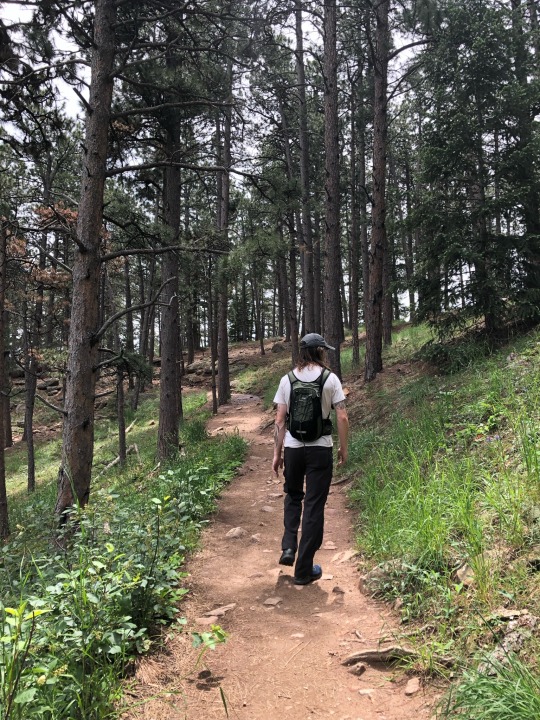

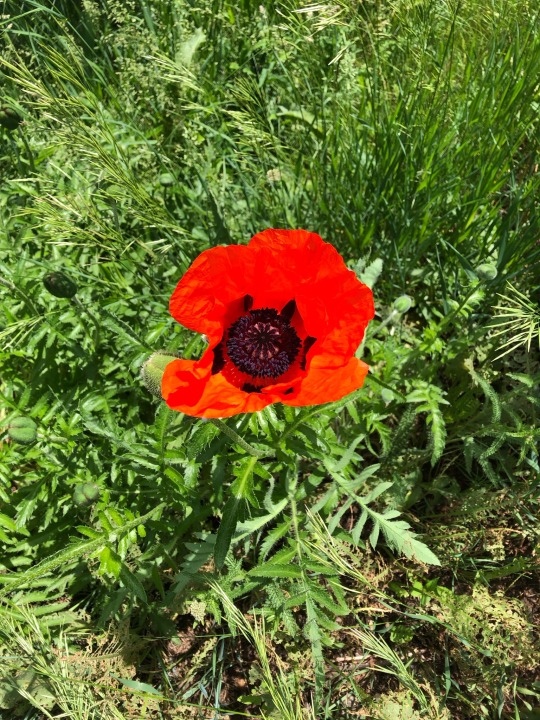

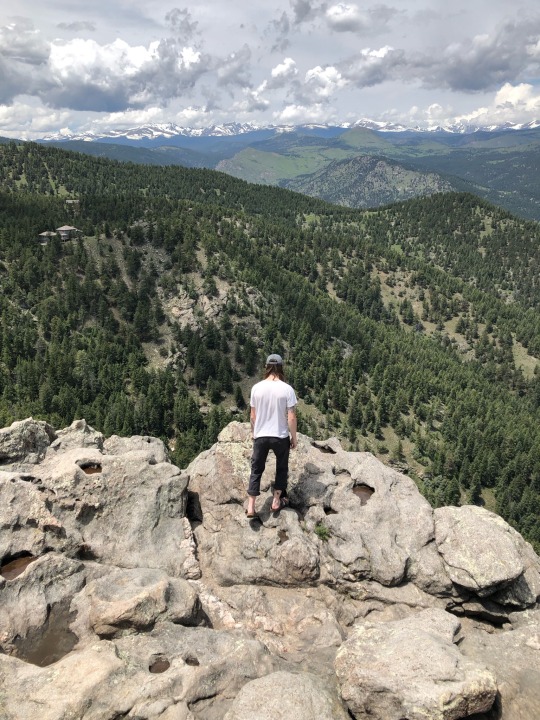
Visiting Colorado for the first time and reconnecting with my best friend from long ago ⛰️💚
0 notes

